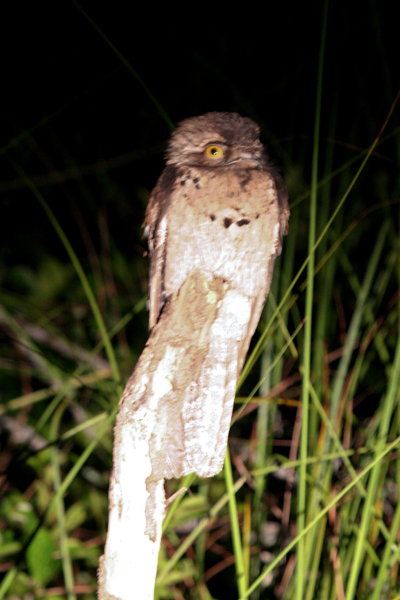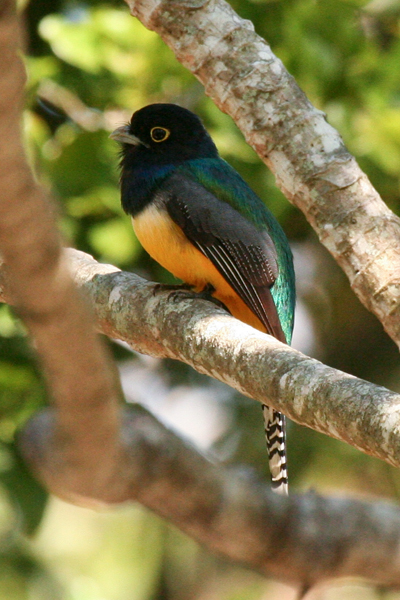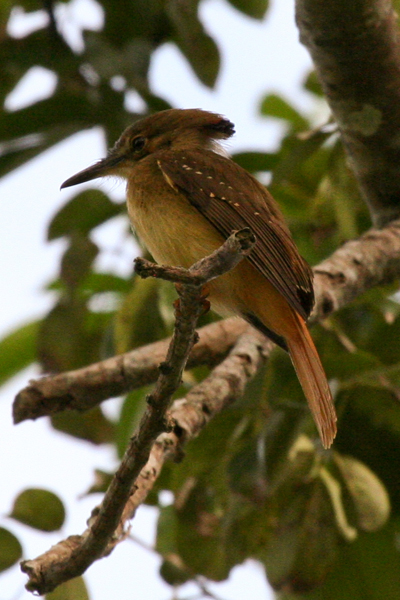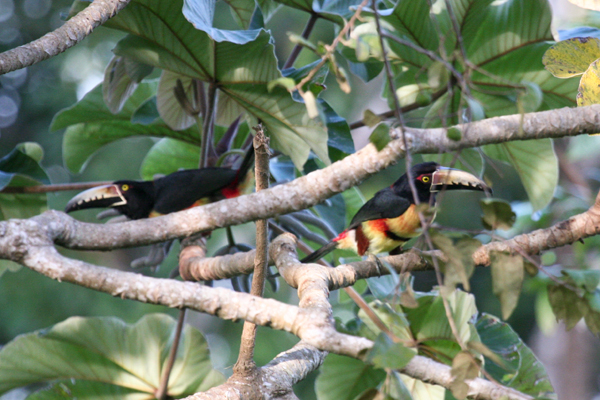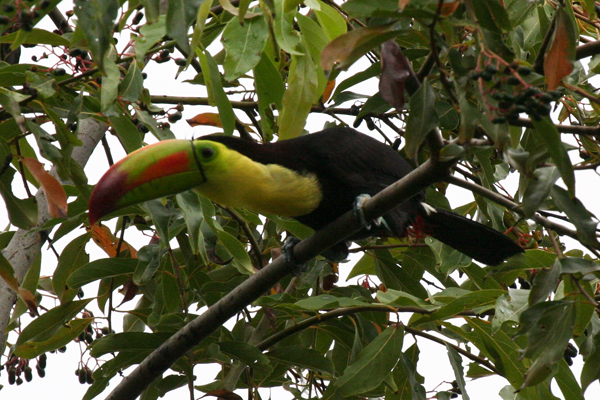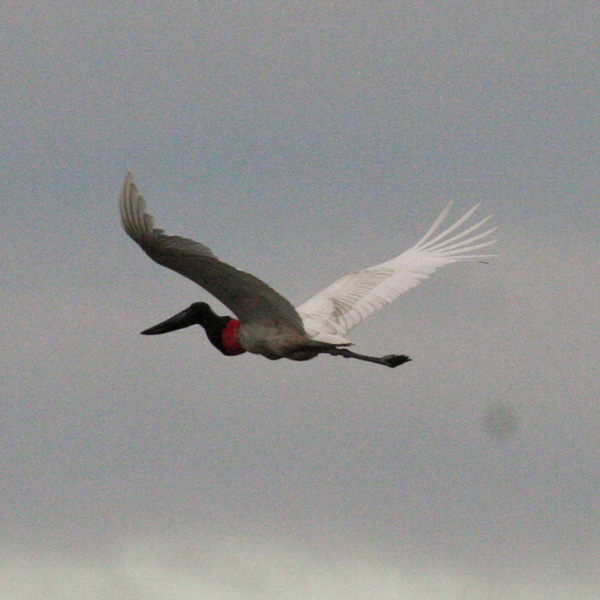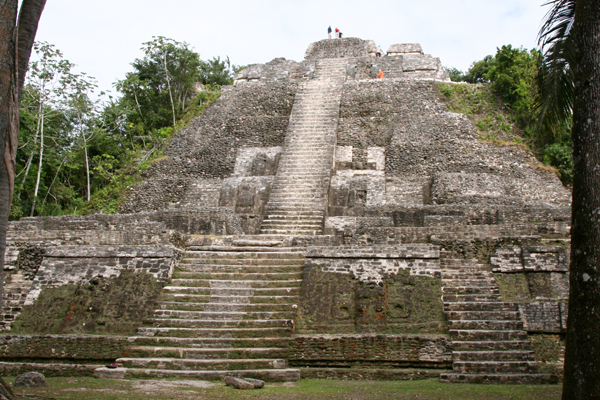Chan Chich and Gallon Jug are part of a very large private holding in western Belize, adjacent to its border with Guatemala. They raise or grow all of their own food on the ranch. Barbara went horseback riding one day and rode through the pastures in the midst of cattle, and also through a coffee growing area. Chan Chich has been a birding destination for many birders for many years. I heard about it years ago and it has for a long time been on my list of places that I wanted to visit. Chan Chich Lodge has a dozen or so separate cabanas. They are straw-thatched and very nicely appointed. All dining is centered in the Lodge. It was a step up from Lamanai, which, in turn was a step up from Crooked Tree, at least in terms of the luxury afforded by the cabanas and the Lodge. As indicated in my earlier posts, however, the birding at Crooked Tree and at Lamanai was not much different from what we found at Chan Chich. On the drive to the Lodge we were able to observe the substantial damage caused to the jungle by the winds of Hurricane Richard, which hit the area hard in October, 2010.
With the help of the excellent guides provided by the Lodge, we saw many of the same birds at Chan Chich as we had seen at Lamanai. Our guides reported that for a while after the hurricane, many of their birds had disappeared, but were now returning. New “Life Birds” at Chan Chich were plentiful, however, and included the strange and beautifully colored Ocelated Turkeys, which were very tame.
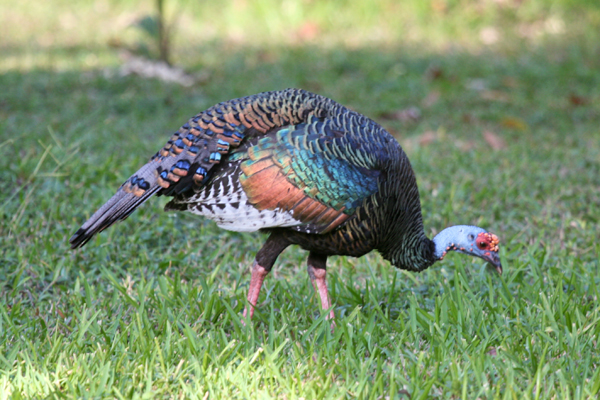 ]
]
A pair of Ornate Hawk Eagles was nesting along a trail.
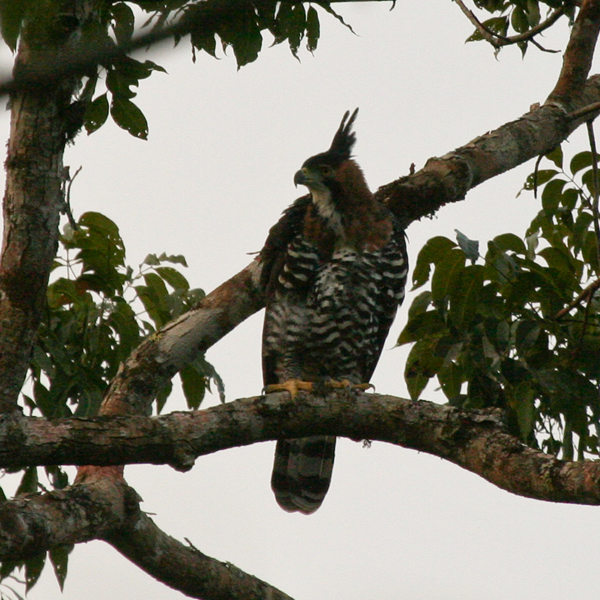
The Great Tinamous were quick to disappear as soon as they were spotted.
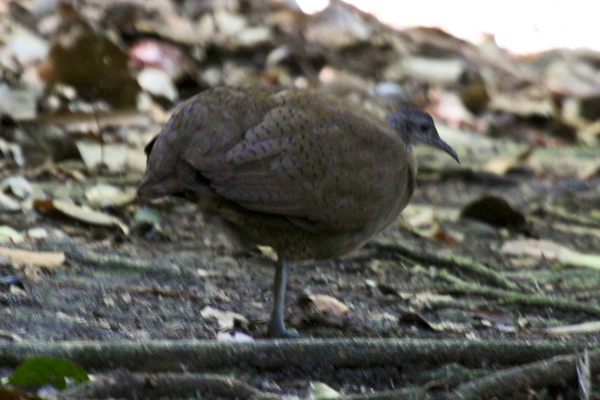
This Crested Guan was watching us as we were watching him.
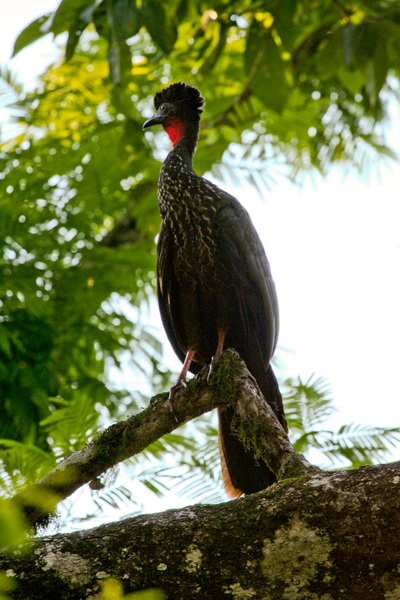
We saw a Sungrebe floating by turtles basking along the shore. We also saw Great Currasows (seen also at Lamanai, but better views here), a Scaled Pigeon (uncommon here, but found by Barbara), Gray-fronted Doves, a Squirrel Cuckoo, Long-billed Hermits, Scaly-breasted Hummingbirds, White-whiskered Puffbird, Black-cheeked, Pale-billed and Chestnut-colored Woodpeckers, and Ruddy, Tawny-winged and Northern Barred Woodcreepers.
The colorful Slate-tailed Trogon was always fun to see.

We spotted a Plain Antvireo, Stub-tailed Spadebill, Ruddy-tailed Flycatcher, Yellow-bellied Tyrannulet, Sulphur-rumped Flycatcher, Eye-ringed Flatbill, White-collared Manakin, White-breasted Wood-wren, Golden-crowned Warbler (the only Warbler species that is resident year-round in Belize), Red-crowned Ant-tanagers, Scrub Euphonia, Olive-backed Euphonia, and Blue-black Grosbeak.
The Mealy Parrots made quite a commotion around the lodge at breakfast time and again later in the afternoon.

Another noisy fellow was the Oropendola which could be seen and heard around the lodge.
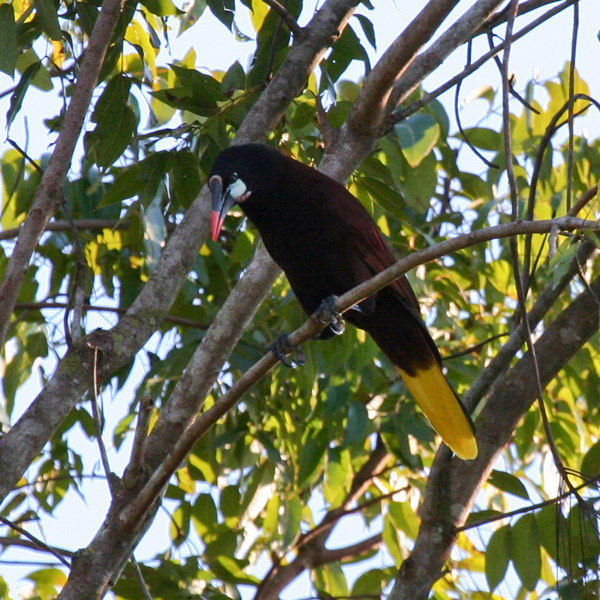
We stayed at Chan Chich 4 nights. On the last day we were driven from the Lodge to Gallon Jug (about 6 miles) and were picked up there in a small plane and flown to the airport near Belize City. This was a much better way to travel than on the back-country roads. Belize is in the same time zone as Iowa. We arrived back home, through Atlanta, about 11:00 p.m. that night.
Belize, formery British Honduras, is a small country of about 500,000 people. English is the official language. Afteer obtaining independence from England about 40 years ago, Belize has remained a part of the British Commonwealth. In the west, where we spent most of our time, many of the residents have come from Guatemala and speak Spanish natively. Without exception, we were treated in a friendly and welcoming fashion. Everyone we met, even while out on the roads walking, greeted us with a smile or a wave. Had we spent time in the more populated areas of Belize City or along the coast, we might not have had quite the same experience. Friends who have taken beach side or island based vacations there, however, say that it was a great experience and they would go back (for the sun, the golf and the beaches, not for the jungle as some of their somewhat peculiar friends just did).

